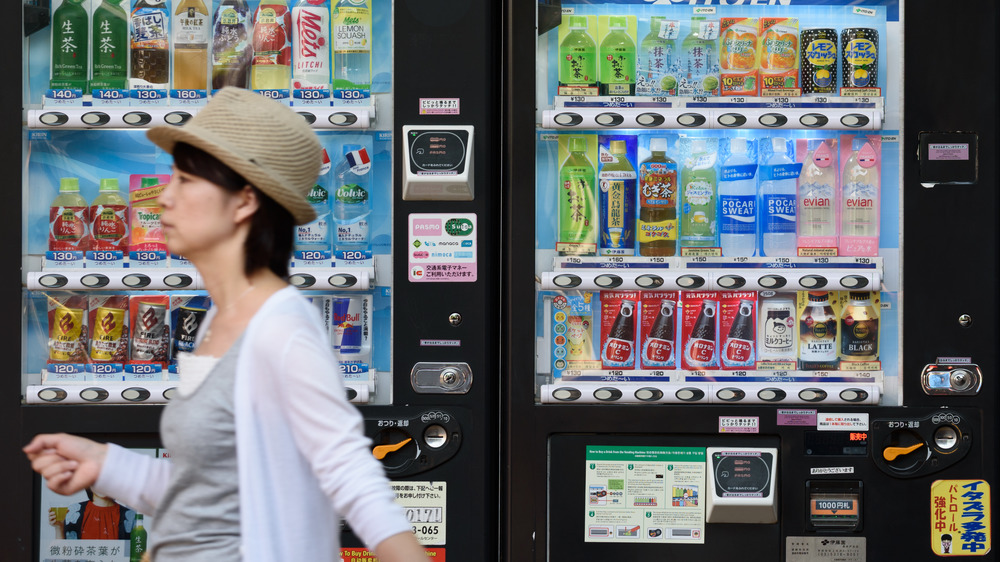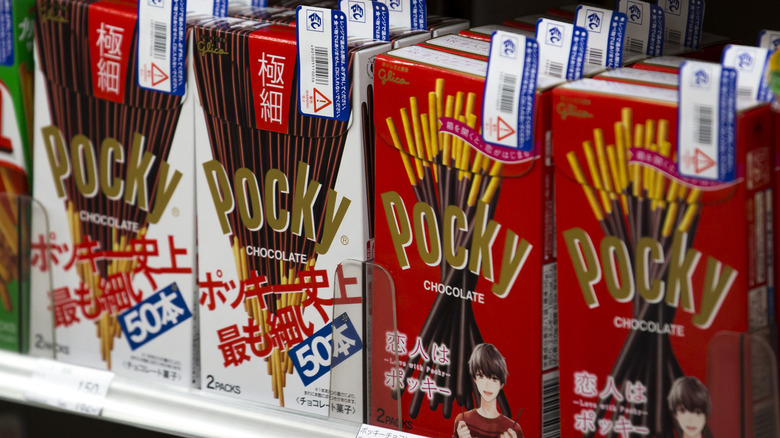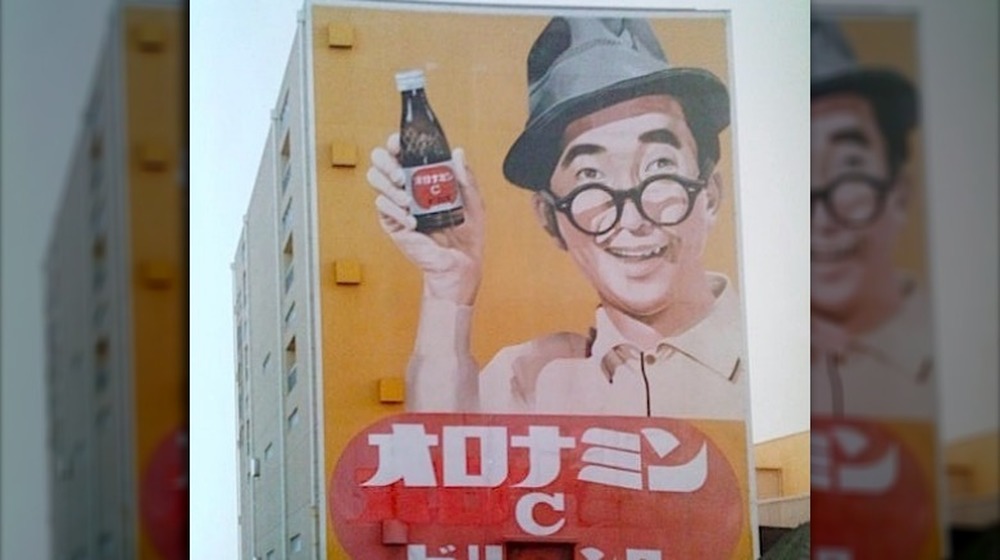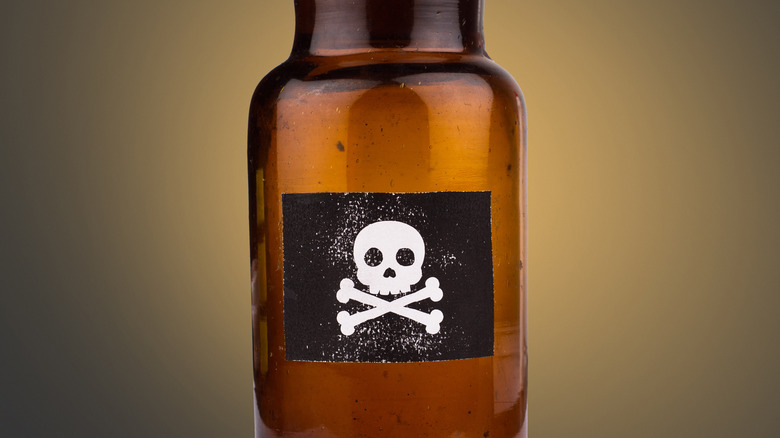The Untold Truth Of The Vending Machine Killer
For most of us, serial killers and mass murderers are the things of horror movies or our own twisted fascination and nothing more, but what's fantasy for most is reality for others. Murderers exist. The victims of serial killings likely assumed it could never happen to them, right up until it did. It's terrifying to know you could go from walking down the street or buying groceries or reading an awesome article about serial killers to – Snap! – being snatched up and thrown into a van, to remain lost until you're the subject of a podcast 10 years later. This is only the reality for less than one percent of homicide victims, according to Discover Magazine. So it's a long shot, but people win the lottery all the time, and most of us don't have that type of good luck.
Killers are even more terrifying when they use sneaky methods we don't see coming or when they pick their targets at random because killing for the sake of killing gets them going. Such was the case with the Vending Machine Killer, who killed as many as 12 unsuspecting vending machine customers in Japan during the mid-'80s.
Vending machines are kind of a big deal in Japan. They have a machine for everything, from hot soup and pizza to women's underwear and, of course, ice cold soda right out of the bottle. The same ice cold soda this killer used to off his victims.
His method of killing was distant, brutal, and random
Everything about the Vending Machine Killings suggests this murderer differed from the average serial killer in notable ways, and joined the ranks of "the most sadistic" in others. First off, the only "type" this killer targeted was whichever poor soul slipped a few yen into a soda machine. Second, unlike the majority of serial killers out there, the Vending Machine Killer didn't murder his victims face to face. He used poison, as a UPI article during the incident describes, slipped into beverage bottles that were left in the dispenser slot of vending machines in western Japan, so, presumably, he wouldn't have to watch the light fade from his victims' eyes. This poison wasn't a peaceful death. It didn't sweep his victims off with a smile. No, this poison was a brutal horror.
The toxin of choice for the Vending Machine Killer was Paraquat, an herbicide poison with a torturous kick. When Paraquat is ingested, it tears the body up over days or weeks. According to ClinMed International Library, the poison is filtered through the kidneys, which quickly destroys the victims' ability to remove it from the system shortly after circulation begins. It can then cause the organs to shut down one by one, but the real killer is in the lungs. Paraquat gravitates to oxygen saturation, so the lungs are the primary target. It causes fibrosis that slowly worsens while the victim's lungs fill with fluid and they drown from the inside.
Those weren't the only poisonings going on at the time in Japan
In the '80s, when the Vending Machine Killer decided to strike, poisoning seemed to be a popular trend among criminals. As the Killer Vending Machines: The Paraquat Killings video (posted on YouTube) by Stupid Beyond Belief details, several strings of poisonings wove their way through the decade. There was a series of candy poisonings as one of Japan's most famous criminals, the Monster with 21 Faces, waged a war against four Pocky manufacturers, costing them over $20 million in earnings in 1984. Wine imported from Austria was discovered to contain antifreeze. Then, as the Serial Napper podcast (posted on YouTube) points out, milk containers were poisoned at local schools shortly after the vending machine incidents.
Of course, the Vending Machine Killer's handiwork was almost instantly plastered in every newspaper and on every news broadcast both in the country and abroad. The majority of Japanese citizens were shocked and horrified, as anyone in their right mind should've been, but a small, twisted portion of the population were insidiously inspired. Naturally, the fame the Vending Machine Killer had received prompted a series of copycat poisoners, leading to several instances of beverages left around public Japan that contained sulfur, lime, and other minor toxins. Oddly enough, a spree of Paraquat-induced suicides also followed the massive wave of publicity, but it's less likely these were self-harming copycats and more likely that the word was out about the chemical's toxicity.
The killer used a running promotion to deliver his deadly serum
The Vending Machine Killer performed his attacks with intelligence. He devised a simple, yet highly effective, method of murder that kept him from raising suspicions while breaking his way into machines across the country to taint beverage bottles. The killer had the perfect circumstances already at his disposal. One of the Japanese "health drink" companies was running a buy-one-get-one promotion to boost sales. Lucky customers would randomly get a second bottle of Oronamin C from vending machines as a kind of marketing gimmick, according to the Crime Classification Manual. Buying one bottle and getting two didn't seem odd.
Oronamin C wasn't the only beverage the killer poisoned. In several of the cases, the murderer laced Coke products instead, but the two-for-one special made Oronamin C easier to get into the hands of unsuspecting locals. Victims were partially taken in by a kind of cultural fad at the time, which the Serial Napper podcast (via YouTube) says was all the rage. In the spirit of kindness — or deadliness, given the context — there was a kind of "pay it forward" thing going on in Japan, where people would buy an extra beverage and leave it in the machine for the next thirsty customer who happened by. It's likely the victims believed the only thing they were being poisoned by was kindness. (And, you know, 65 grams of sugar per bottle.)
The poisonings stopped all at once
The Vending Machine Killer struck in 1985, killing at least 10 and leaving over 30 others in seriously bad shape, and the poisonings seemed to come in two distinct waves. The Killer Vending Machines: The Paraquat Killings video by Stupid Beyond Belief points out that the first set of murders differed from the second in a couple of ways. The first cluster of poisoned drinks included attacks via both Oronamin C and a regional Coca-cola beverage known as "Real Gold." A second, similar poison, called "Diquat," was also used during that first wave. The second wave, however, was limited to Paraquat and Oronamin C, with no deviation.
It raises some questions: Was the Vending Machine Killer working alone? Was there a purpose behind these killings? The video also muses over whether or not the killings may have been tied to public anger over the aforementioned beverages being labeled "health drinks" when, in fact, they contained as much sugar as the rest of the tooth-rotting carbonated delicacies we know and love.
Whatever the case may be, the killings never continued beyond 1985, as the Crime Classification Manual points out. In fact, they seemed to have stopped abruptly. You might be thinking "Oh, that's great. No more killing is a good thing," and you'd be right, but when the poisonings stopped, the leads dried up as well.
Nobody knows who was behind the poisonings
Since there were no leads to follow, the authorities were stumped. They had no clues left to look at, no trails to track down. There was only a string of poisonings, an energy drink, and a mysterious psychopath on the loose. The forensic technology of 1985 had been exhausted, and to this day, the identity of the Vending Machine Killer remains a mystery.
It's possible this killer was none other than a notorious Japanese crime group that specialized in extorting food manufacturers during the 1980s by poisoning candy and other such treats: The Monster with 21 Faces. The New York Times refers to them as "The Mystery Man with 21 Faces," but they seem to be the only publication who uses this translation.
The methods used by the Vending Machine Killer were different from those of the 21 Faces. Plus, this group of poisoners liked to get credit, and The Monster with 21 Faces wrote a letter telling authorities they'd backed out of the game and had nothing to do with any of the vending machine murders.
To add a little bit of fear to the heaping vending machine fire, a second wave of poisoned drinks started appearing in dispensing slots in 1998, according to CBC, but it's unclear whether these were connected to the first killer, influenced by him, or simply the work of another twisted individual running on the same wavelength. No one's in custody for either crime. We might never know.





